ML Infrastructure Engineers are the backbone of any machine learning team's success. They build and maintain the systems that enable data scientists to develop, train, and deploy machine learning models efficiently and at scale.
The skills required for this role include expertise in cloud services, containerization, orchestration, CI/CD, as well as proficiency in programming languages and a strong understanding of machine learning workflows.
Candidates can write these abilities in their resumes, but you can’t verify them without on-the-job ML Infrastructure Engineer skill tests.
In this post, we will explore 7 essential ML Infrastructure Engineer skills, 7 secondary skills and how to assess them so you can make informed hiring decisions.
Table of contents
7 fundamental ML Infrastructure Engineer skills and traits
The best skills for ML Infrastructure Engineers include Cloud Platforms, Containerization, Data Pipeline Design, Version Control, Automated Testing, MLOps Tools and Monitoring Systems.
Let’s dive into the details by examining the 7 essential skills of a ML Infrastructure Engineer.
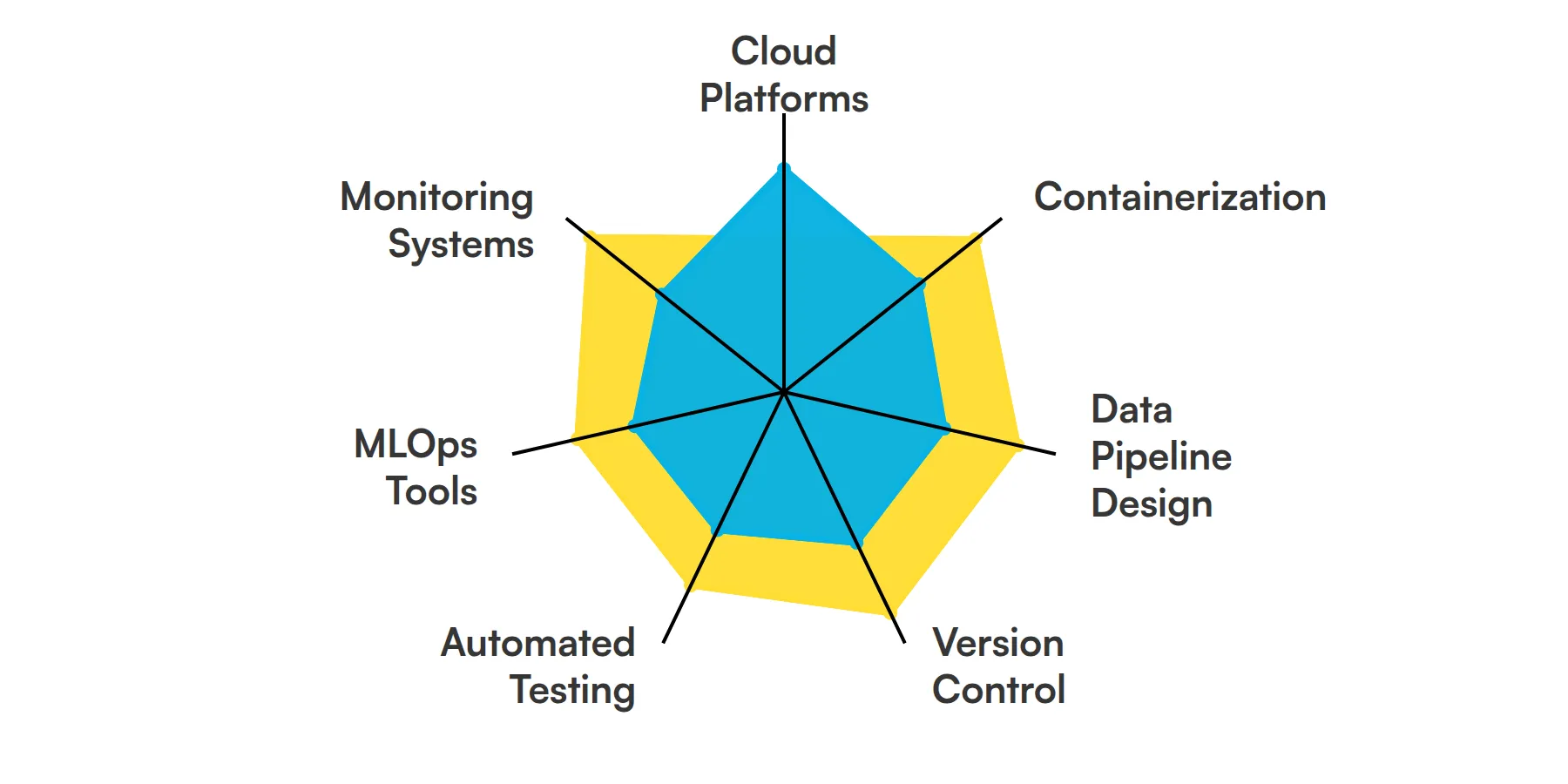
Cloud Platforms
Navigating and managing cloud platforms is non-negotiable for an ML Infrastructure Engineer. You will deploy, scale, and monitor machine learning models and services using platforms like AWS, Azure, or Google Cloud. Your understanding of these platforms' core services enables smooth integration and efficient operations of ML workflows.
For more insights, check out our guide to writing a Cloud Engineer Job Description.
Containerization
Docker and Kubernetes become your best friends when ensuring that machine learning applications are consistently deployed across different environments. As an ML Infrastructure Engineer, your role is to ensure that models are easily replicable, scalable, and maintainable through containerization.
Data Pipeline Design
Mastering data pipeline architecture is crucial. Whether it’s for data ingestion, streaming, or processing, you will craft and maintain systems that handle large volumes of data efficiently, ensuring models are fed with quality and timely data.
Version Control
Git or other version control systems are indispensable tools that help you track and manage changes in code, datasets, and model versions. In your role, this skill supports collaboration and ensures reproducibility of experiments in ML projects.
Check out our guide for a comprehensive list of interview questions.
Automated Testing
Test-driven development isn't just for software engineers. For an ML Infrastructure Engineer, creating automated tests for ML pipelines ensures reliability and robustness. You will implement unit tests, integration tests, and checks to validate model performance and pipeline accuracy.
MLOps Tools
The adoption of MLOps tools like MLflow, TFX, or Kubeflow becomes a part of your daily workflow. These tools allow you to create efficient, repeatable ML pipelines, facilitating version tracking, testing, and deployment automation.
For more insights, check out our guide to writing a Machine Learning Operations (MLOps) Engineer Job Description.
Monitoring Systems
Building and maintaining surveillance systems for model performance and drift detection is part of the job. You keep an eye on deployed model metrics and alerts, ensuring performance aligns with expectations and addressing issues proactively.
7 secondary ML Infrastructure Engineer skills and traits
The best skills for ML Infrastructure Engineers include Networking Basics, Scripting Languages, Database Management, Security Practices, API Development, Resource Management and Infrastructure as Code.
Let’s dive into the details by examining the 7 secondary skills of a ML Infrastructure Engineer.
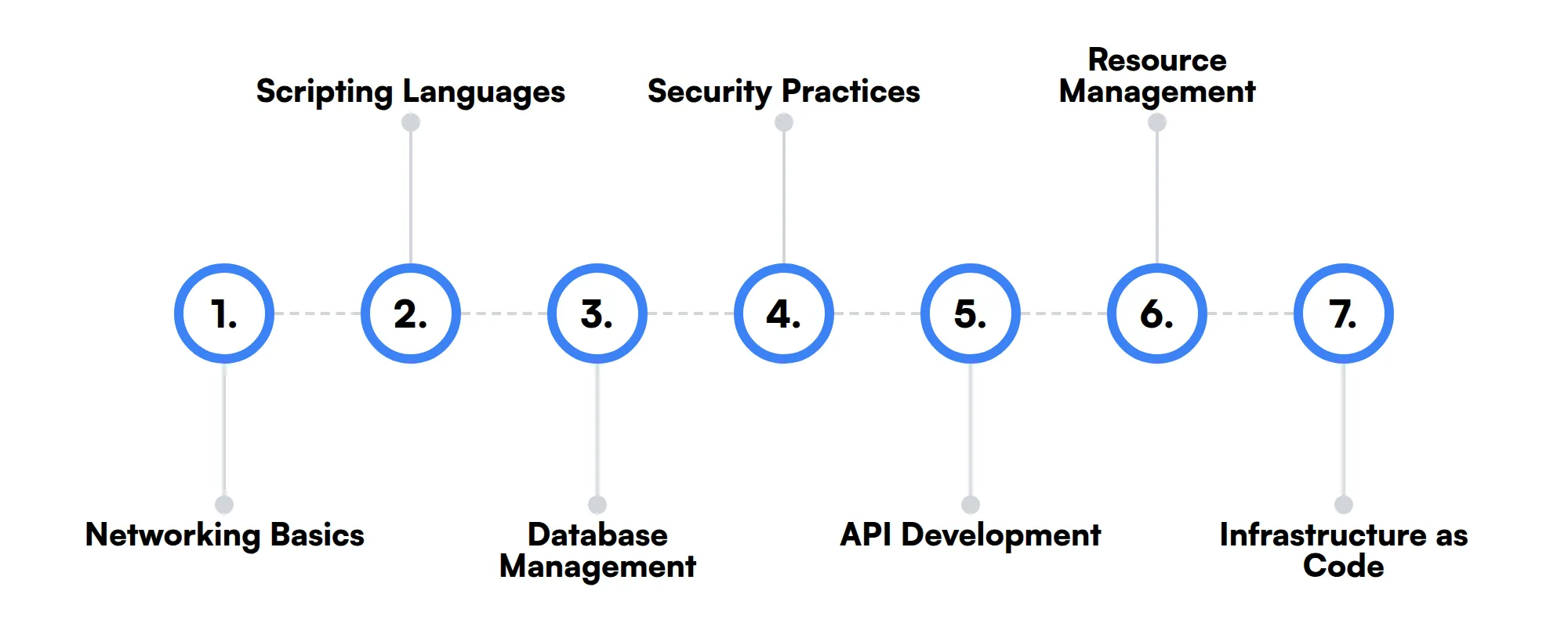
Networking Basics
Understanding networking is beneficial for ensuring secure and efficient communication between various components of your ML infrastructure. Basic networking skills help you troubleshoot and optimize data flow.
Scripting Languages
Languages like Python or Bash are useful for automating routine tasks and developing custom scripts that streamline ML operations. Your role often involves crafting scripts to automate workflows and integrate services.
Database Management
Knowledge of SQL and NoSQL databases equips you to manage and query the vast data pools used in machine learning. You will interact with databases to source and store model inputs and outputs efficiently.
Security Practices
Familiarity with security protocols and practices ensures that data and models are protected against breaches. Secure architecture and data encryption within the ML infrastructure underline your commitment to safeguarding sensitive information.
API Development
Creating and managing APIs is crucial for allowing ML models to interact with other applications and systems. As an ML Infrastructure Engineer, you will design RESTful or GraphQL APIs to expose model functionalities.
Resource Management
Proficient resource allocation ensures that computational resources are used optimally across ML tasks. Your ability to monitor and scale CPU, GPU, and memory resources efficiently is key to maintaining performance under varying loads.
Infrastructure as Code
With tools like Terraform or CloudFormation, you define and manage infrastructure through code. This skill allows you to create repeatable, reliable, and scalable infrastructure deployments, crucial for ML environments.
How to assess ML Infrastructure Engineer skills and traits
Evaluating the skills of an ML Infrastructure Engineer involves more than just checking off a list of qualifications. It's about understanding how a candidate can leverage key technologies like cloud platforms, containerization, and data pipeline design to drive successful machine learning projects. While a resume might highlight versions of software or platforms they've worked with, only a well-structured assessment can demonstrate their capability to apply these skills in real-world scenarios.
Skills-based assessments provide deeper insights into a candidate's expertise by simulating tasks that ML Infrastructure Engineers face regularly. Such evaluations help identify proficiency in areas like version control, automated testing, and the use of MLOps tools. If you're looking to streamline this process, Adaface assessments offer customized testing solutions, ensuring a 2x improvement in the quality of your hires and an 85% reduction in screening time, allowing you to focus on candidates with the right technical and practical skills.
Let’s look at how to assess ML Infrastructure Engineer skills with these 6 talent assessments.
Cloud Computing Online Test
Our Cloud Computing Online Test evaluates a candidate's knowledge and understanding of various aspects of cloud computing, such as cloud service models and deployment options. The test examines their proficiency in cloud-based solutions and their implementation across different scenarios.
This test challenges candidates on cloud service models and virtualization, along with cloud security and scalability considerations. It also assesses cloud storage, database management, networking, and orchestration strategies, ensuring the candidate's familiarity with comprehensive cloud concepts.
High-scoring candidates demonstrate expertise in cloud orchestration, security measures, and effective database management in cloud environments, qualities highly applicable in managing scalable cloud infrastructures.
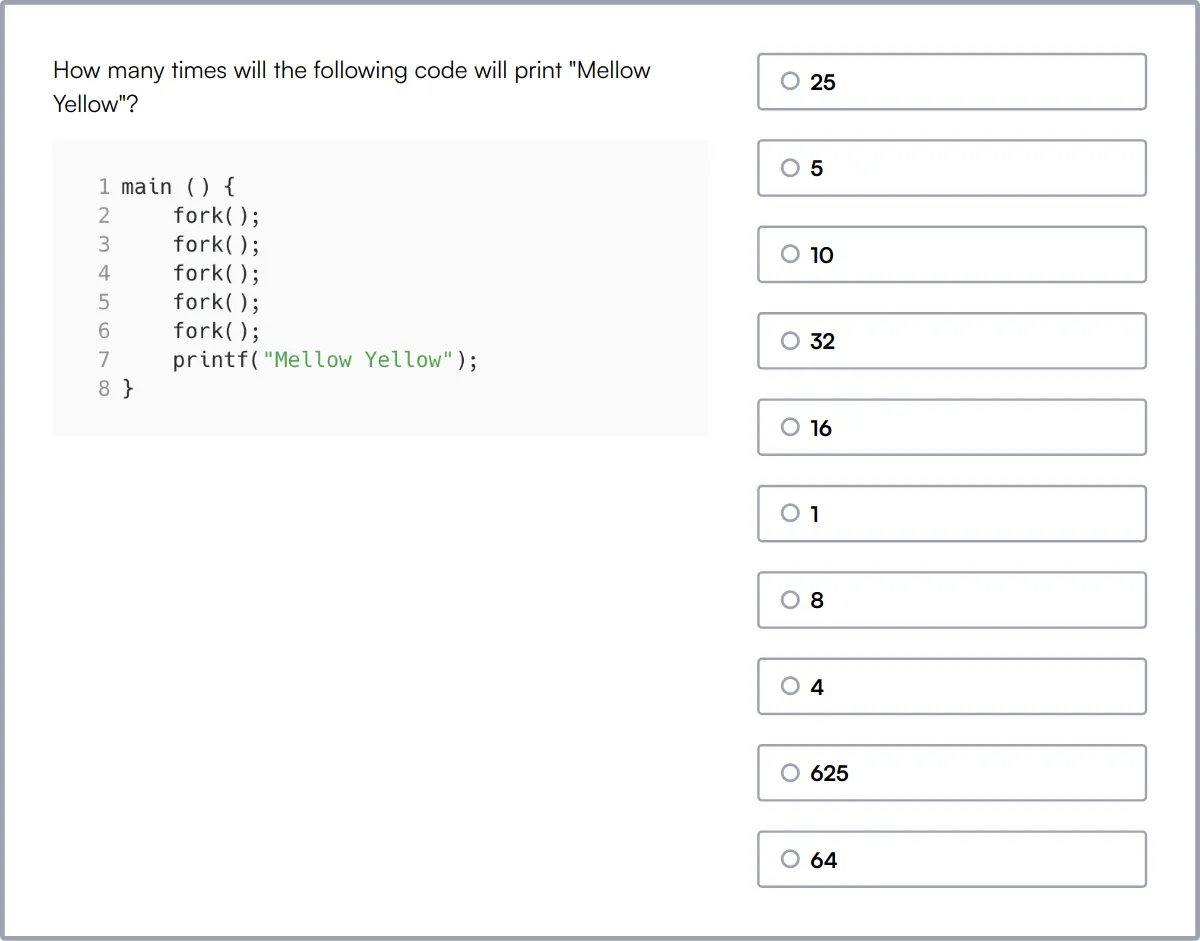
Docker Online Test
The Docker Online Test assesses a candidate's ability to utilize Docker efficiently for application deployment and management, testing their grasp on containerization technology from the basics to advanced Docker functionalities.
This test examines their understanding of Docker basics and extends to Docker images and networking. Candidates must navigate Docker Compose, orchestration with swarm, and Docker volumes. They should also demonstrate the capacity to address troubleshooting and enhance Docker security.
Candidates proficient with Docker will be skilled in container orchestration and securing Docker environments, ensuring managed container deployments are secure and efficient.
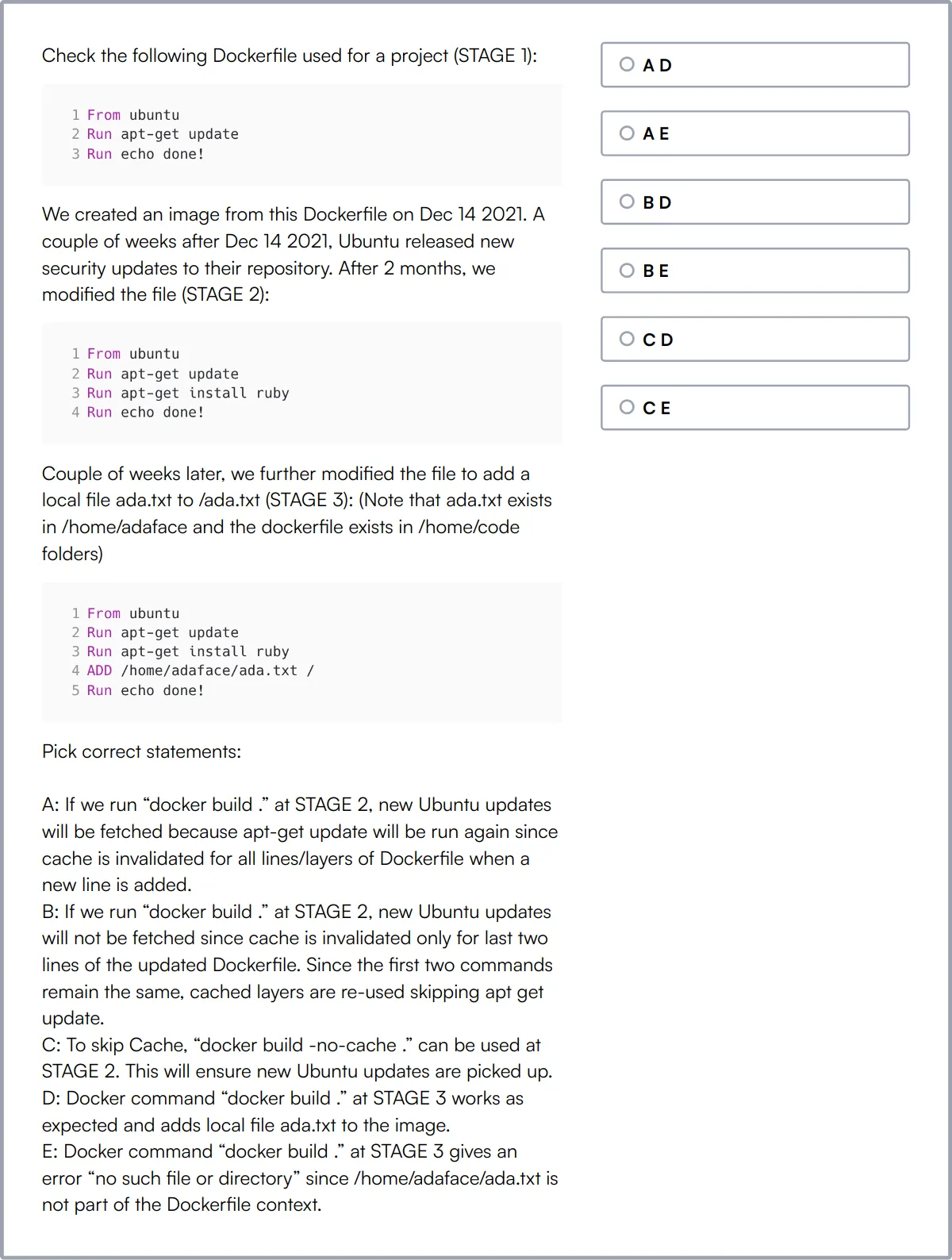
Apache NiFi Online Test
Our Apache NiFi Online Test evaluates the candidate's proficiency in managing and processing data using Apache NiFi. It assesses their capability to handle data integration and manage dataflow designs.
The test requires candidates to comprehend data flow architecture and manage data transformation. Knowledge of data routing and prioritization is critical, as is experience with cluster management and high availability settings in NiFi environments.
Candidates with high scores exhibit a strong grasp of Apache NiFi's components, successfully managing comprehensive data flow scenarios and integrating varied data systems.
Git Online Test
The Git Online Test evaluates a candidate's comprehension and use of Git, examining their ability to operate this version control system effectively for source code management.
This test challenges candidates on creating and managing repositories, handling branching and merging, and resolving conflicts. They should be adept with rebasing, proficient with remote repositories, and understand various Git workflows.
Successful candidates have a thorough command of Git operations, showcasing skills that ensure seamless version control in software projects, including effective use of branching models.
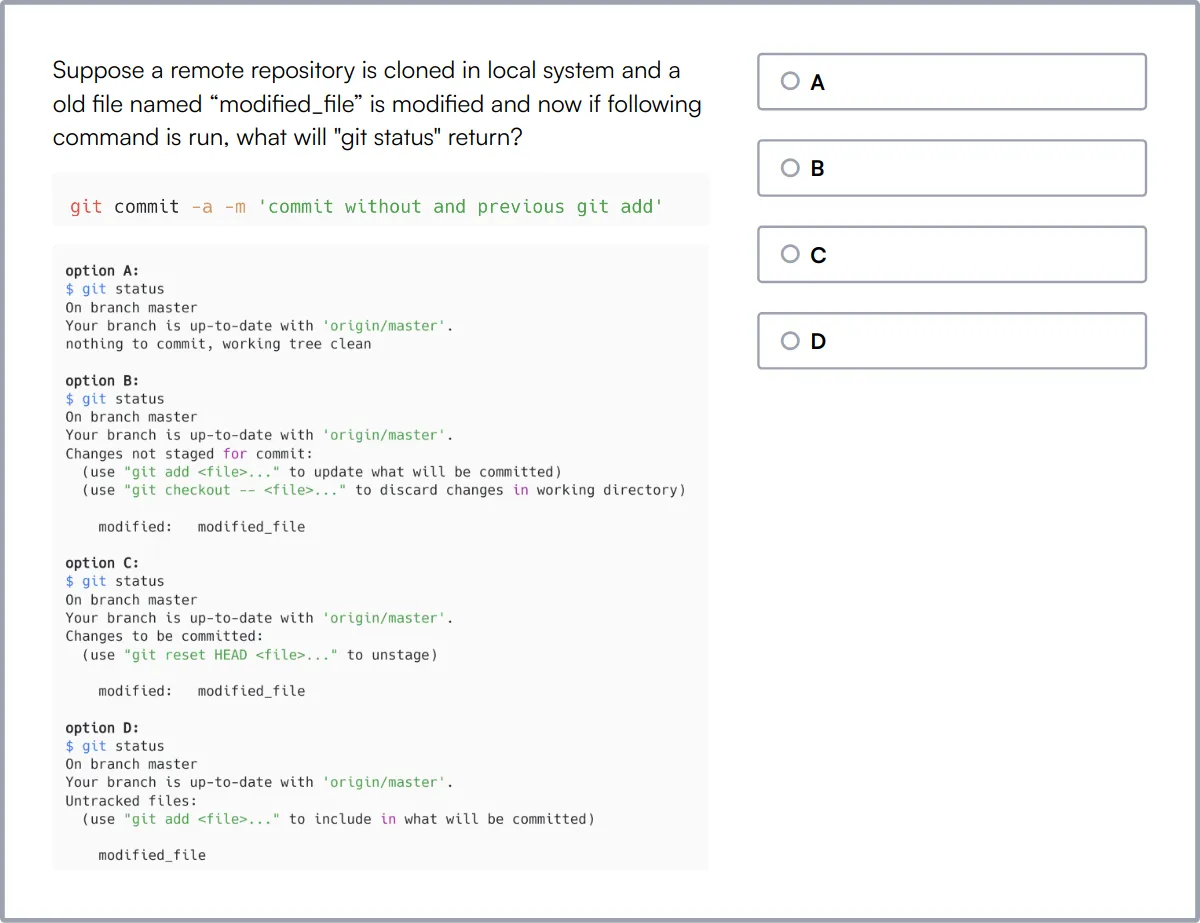
Selenium Online Test
Our Selenium Online Test evaluates candidates on their capability to conduct automation testing using the Selenium WebDriver framework, testing knowledge from framework construction to execution.
The test covers grasp of Selenium architecture, conducting cross-browser testing, and understanding framework building. Candidates are tested on interacting with web components, managing API testing (manual and automated), and creating data-driven frameworks.
High scorers demonstrate adeptness in building testing frameworks from scratch and integrating various testing methodologies using Selenium, providing valuable insights into web testing scenarios.
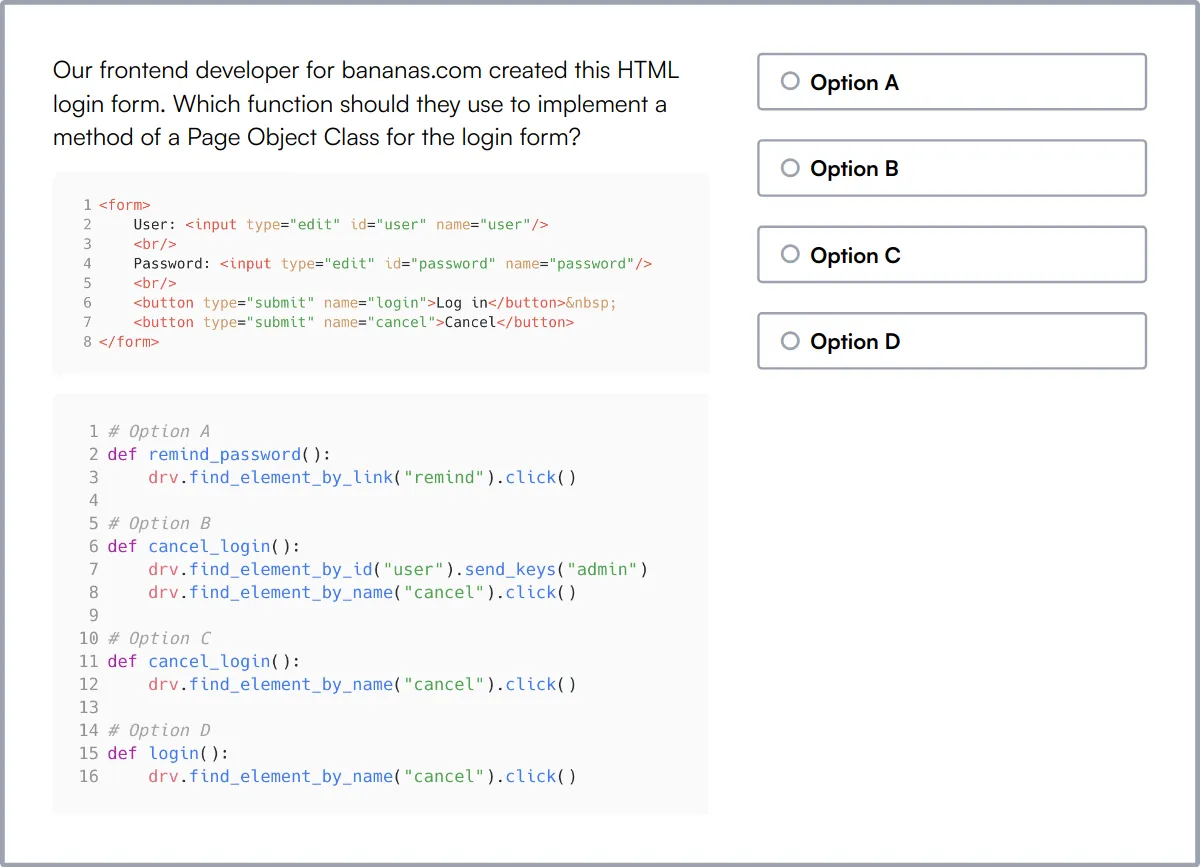
MLOps Skills Test
The MLOps Skills Test evaluates a candidate's expertise in managing machine learning operations, from the development lifecycle to deployment and continual model monitoring.
Candidates are assessed on their knowledge of the ML lifecycle, processes for model deployment and CI/CD integration for ML projects. It challenges understanding in areas like model monitoring, data version control, and feature engineering.
Candidates who score well demonstrate effective management strategies for operationalizing ML models, including competent use of ML infrastructure and effective experiment tracking techniques.
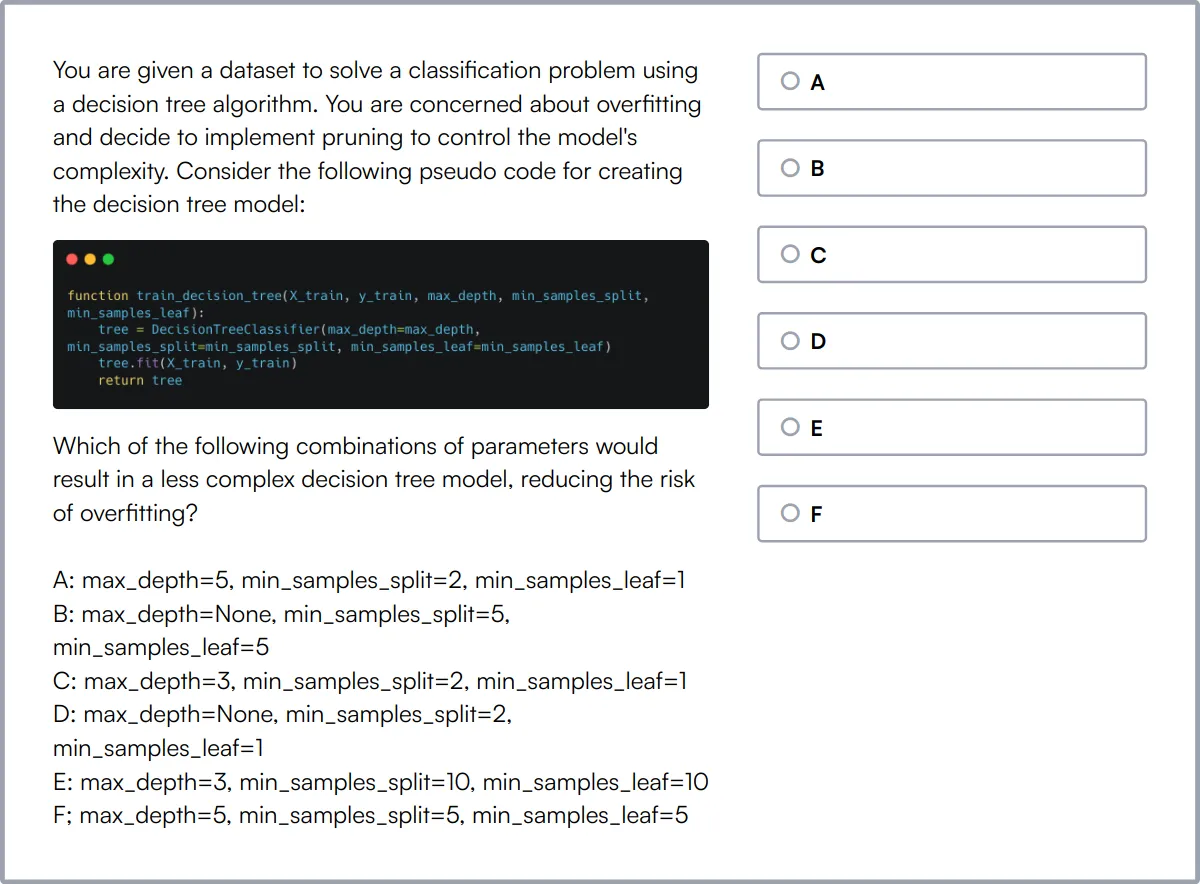
Summary: The 7 key ML Infrastructure Engineer skills and how to test for them
| ML Infrastructure Engineer skill | How to assess them |
|---|---|
| 1. Cloud Platforms | Assess ability to deploy and manage applications on the cloud. |
| 2. Containerization | Evaluate skills in using Docker or Kubernetes for application deployment. |
| 3. Data Pipeline Design | Check ability to design and implement efficient data workflows. |
| 4. Version Control | Determine proficiency in managing code with Git or similar tools. |
| 5. Automated Testing | Gauge skills in implementing tests for code quality assurance. |
| 6. MLOps Tools | Assess understanding of tools to streamline machine learning operations. |
| 7. Monitoring Systems | Evaluate knowledge of tools for observing and tracking system performance. |
ML Infrastructure Engineer Test
ML Infrastructure Engineer skills FAQs
How important is experience with cloud platforms for an ML Infrastructure Engineer?
Experience with cloud platforms is key for scaling ML models and managing resources. Assess candidates' knowledge of services like AWS, Azure, or GCP by asking about projects they’ve deployed on these platforms.
What should recruiters look for in containerization skills?
Look for familiarity with Docker and Kubernetes. Candidates should discuss how they manage and deploy containerized applications and understand orchestrating complex workloads.
How do you evaluate an engineer's ability to design data pipelines?
Assess their experience with ETL/ELT processes. Ask for examples of pipeline design, focusing on tools like Apache Airflow or Apache Beam, and how they handle data transformations.
Why is version control emphasized in ML infrastructure roles?
Version control, using tools like Git, is crucial for collaboration and tracking changes. Ensure candidates can articulate how they manage code versions and resolve merge conflicts.
What questions can assess knowledge of automated testing in ML pipelines?
Inquire about their approach to testing ML models and data integrity. Discuss tools they use for unit and integration testing, such as PyTest or Jenkins.
How do you test a candidate's understanding of MLOps tools?
Discuss their experience with platforms like MLflow or Kubeflow. Evaluate how they use these tools for experiment tracking, model training, and deployment automation.
What are key aspects of API development for ML Infrastructure Engineers?
Ensure candidates can design RESTful APIs for model serving. Ask about their experience developing APIs with frameworks like FastAPI or Flask, emphasizing scalability.
Which scripting languages should candidates know for ML infrastructure roles?
Proficiency in scripting languages like Python or Bash is necessary. Request examples where they've automated tasks or managed deployments using these languages.

40 min skill tests.
No trick questions.
Accurate shortlisting.
We make it easy for you to find the best candidates in your pipeline with a 40 min skills test.
Try for freeRelated posts
Free resources



